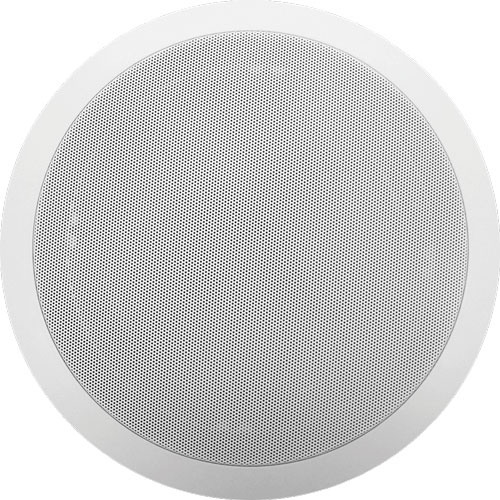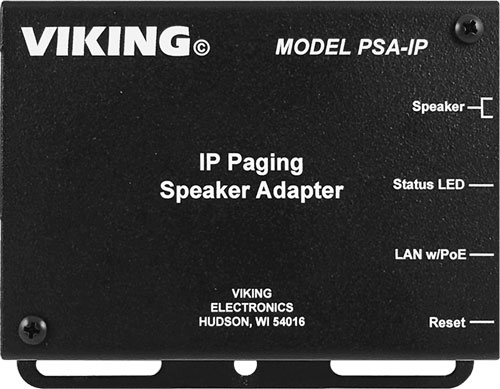When it comes to public address (PA) systems, there are two basic types of speaker: analog speakers and IP speakers.
Here’s a common scenario: There’s a school (or other building) with a full analog paging deployment in place. However, the analog system is showing its age. The speakers still work fine, but the discrete system of cabling, amps, controllers, etc. is becoming more and more difficult to maintain. On top of maintenance, the administration wants to integrate the paging system with their other communications, which is possible with an IP system but impossible with an analog system.
So they want to establish an IP paging system but keep using their perfectly fine analog speakers to reduce costs. Is this possible? Can they integrate analog paging speakers into an IP paging system?
Yes, using an IP Paging Adapter. In this blog, we’re going to use paging equipment from Viking Electronics for examples. Let’s get into it!

How to integrate analog speakers into an IP paging system
To be used with an IP paging system, an analog paging speaker needs an IP paging adapter.
An IP paging adapter doesn’t make an analog speaker into an IP speaker. IP speakers like Viking 40-IP have network technology built-in, which analog speakers like Viking 40AE don’t.
So what does an IP paging adapter do? Two things in particular:
- It makes an analog speaker “discoverable” for an IP paging system. This is a fancy way of saying that the IP adapter gives the IP system a network location to send signals to.
- It converts analog audio signals into IP audio signals and vice versa. Think of it like this: Analog systems speak one language and IP systems speak another language. The adapter translates between the two, so an analog speaker receives the audio information in the proper form for it broadcast.
For example, Viking PSA-IP connects an analog speaker to a SIP paging system. The adapter also supports Multicast. PSA-IP has an amplifier capable of driving up to 6 analog speakers in total, so it helps you streamline your cabling. The adapter can be powered via PoE (Power Over Ethernet).
If you want the same adapter but with talk-back functionality, check out Viking PSA-IP-TB. “Talk-back” means duplex audio, so the paging speaker can work (with a microphone) for two-way conversations. For example, a teacher might be able to speak with the principal’s office using a talk-back paging speaker.

Benefits of integrating analog speakers into an IP paging system
By connecting an analog speaker using an IP adapter, you’ll gain many of the benefits of IP paging. Here are a couple of examples.
Zone paging is much simpler with IP paging systems, because the zones are determined via the system application, not via hard-wired connections and physical zone paging equipment. Related to zone paging is Multicast, which streamlines sending broadcasts to multiple speakers.
One area of interest for many organizations like schools is how scheduling is both simplified and dynamic: simplified because you change times by typing in a computer application; dynamic because NTP (Network Time Protocol) always keeps your timing accurate, even with Daylight Saving Time.
These features are controlled through the IP paging system and don’t require the technology to be present in the speaker itself. That means you get these features when you use an adapter.
Interested in learning more? For an in-depth look at paging, check out our clear, detailed Paging Systems Buyer’s Guide.

